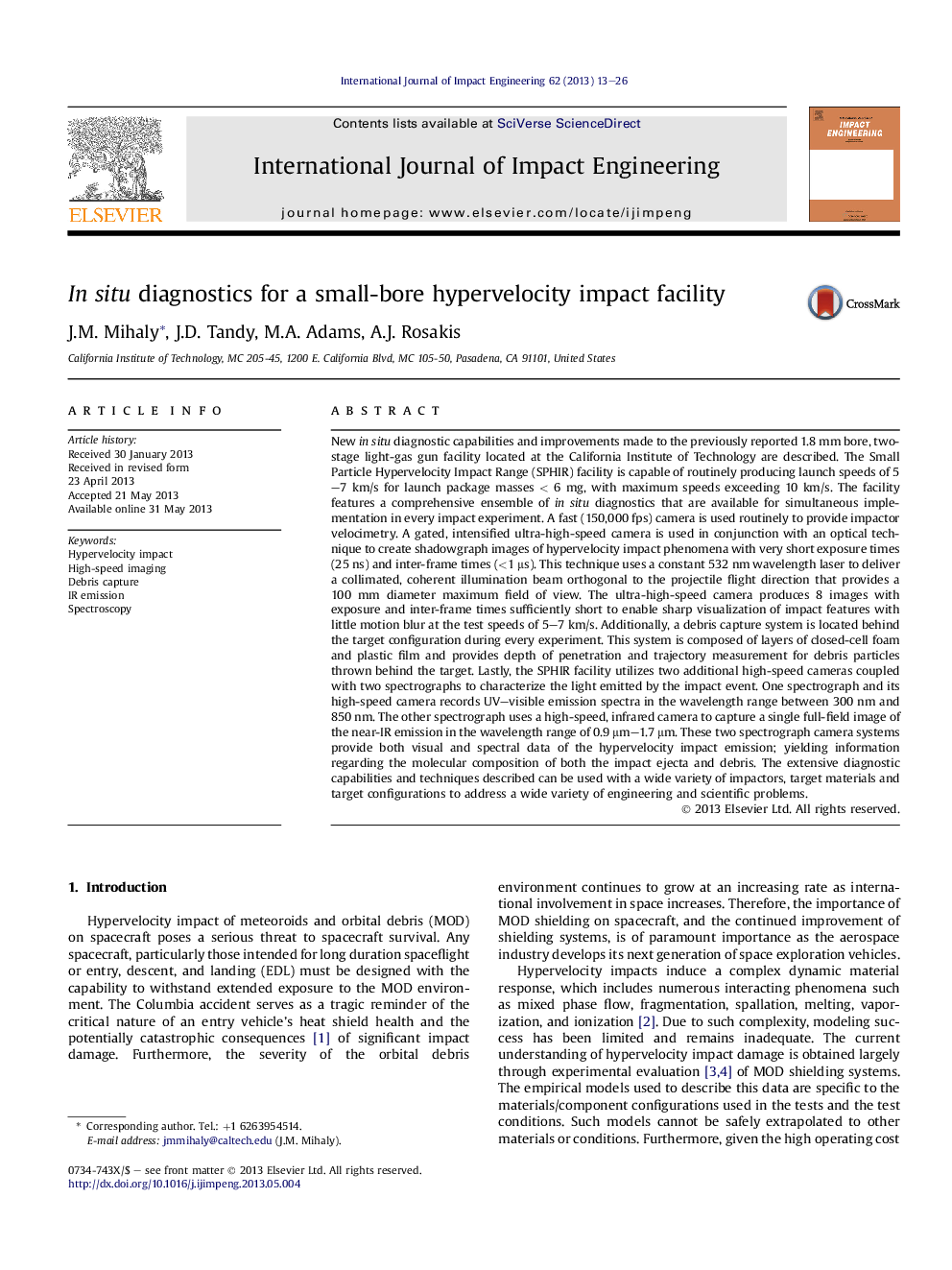| Article ID | Journal | Published Year | Pages | File Type |
|---|---|---|---|---|
| 7173219 | International Journal of Impact Engineering | 2013 | 14 Pages |
Abstract
New in situ diagnostic capabilities and improvements made to the previously reported 1.8 mm bore, two-stage light-gas gun facility located at the California Institute of Technology are described. The Small Particle Hypervelocity Impact Range (SPHIR) facility is capable of routinely producing launch speeds of 5-7 km/s for launch package masses < 6 mg, with maximum speeds exceeding 10 km/s. The facility features a comprehensive ensemble of in situ diagnostics that are available for simultaneous implementation in every impact experiment. A fast (150,000 fps) camera is used routinely to provide impactor velocimetry. A gated, intensified ultra-high-speed camera is used in conjunction with an optical technique to create shadowgraph images of hypervelocity impact phenomena with very short exposure times (25 ns) and inter-frame times (<1 μs). This technique uses a constant 532 nm wavelength laser to deliver a collimated, coherent illumination beam orthogonal to the projectile flight direction that provides a 100 mm diameter maximum field of view. The ultra-high-speed camera produces 8 images with exposure and inter-frame times sufficiently short to enable sharp visualization of impact features with little motion blur at the test speeds of 5-7 km/s. Additionally, a debris capture system is located behind the target configuration during every experiment. This system is composed of layers of closed-cell foam and plastic film and provides depth of penetration and trajectory measurement for debris particles thrown behind the target. Lastly, the SPHIR facility utilizes two additional high-speed cameras coupled with two spectrographs to characterize the light emitted by the impact event. One spectrograph and its high-speed camera records UV-visible emission spectra in the wavelength range between 300 nm and 850 nm. The other spectrograph uses a high-speed, infrared camera to capture a single full-field image of the near-IR emission in the wavelength range of 0.9 μm-1.7 μm. These two spectrograph camera systems provide both visual and spectral data of the hypervelocity impact emission; yielding information regarding the molecular composition of both the impact ejecta and debris. The extensive diagnostic capabilities and techniques described can be used with a wide variety of impactors, target materials and target configurations to address a wide variety of engineering and scientific problems.
Related Topics
Physical Sciences and Engineering
Engineering
Mechanical Engineering
Authors
J.M. Mihaly, J.D. Tandy, M.A. Adams, A.J. Rosakis,
